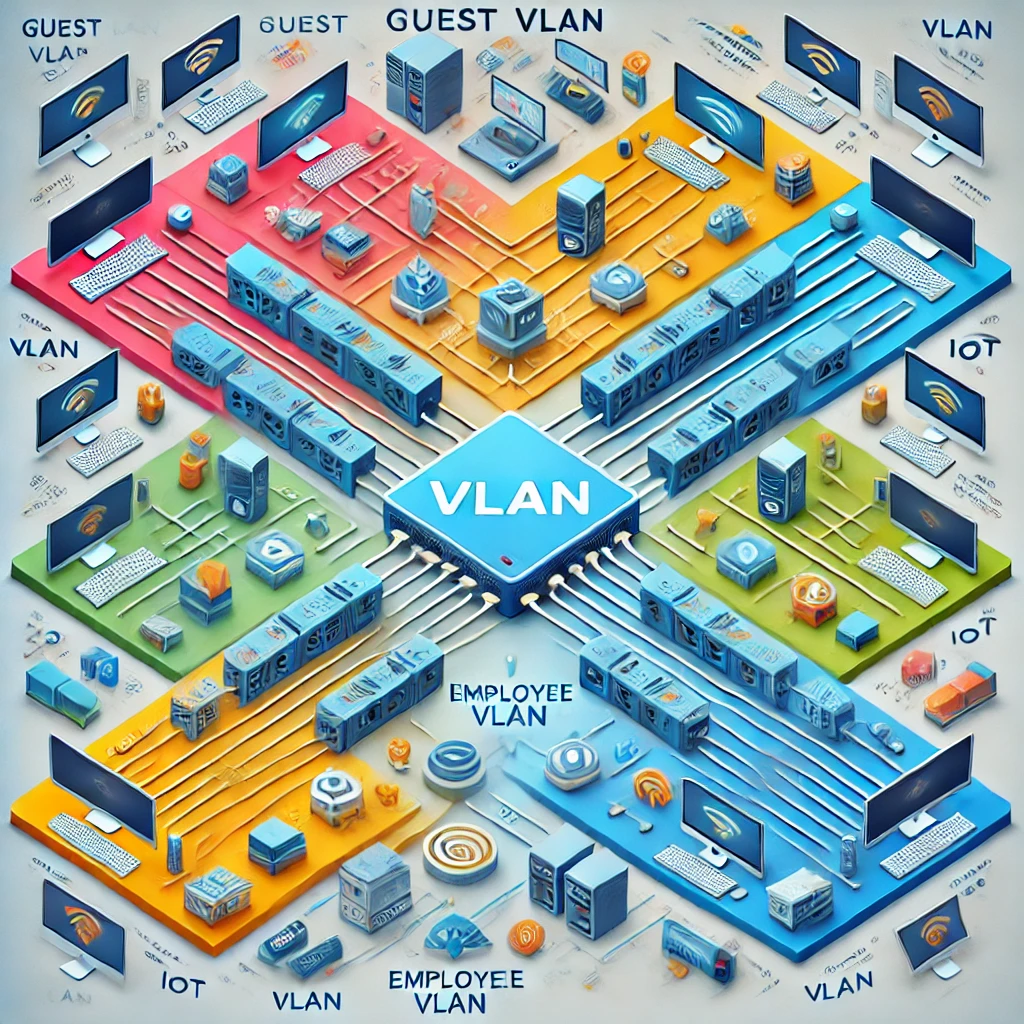In today’s interconnected business landscape, network security is more critical than ever. For small and medium-sized businesses, virtual LANs (VLANs) offer an accessible yet powerful solution to protect network data and optimize performance. VLAN segmentation allows businesses to divide a single physical network into separate, secure virtual environments, enhancing control and minimizing the risk of data breaches. Here’s why VLAN segregation is essential and how it fortifies network security.
Understanding VLAN Segregation
VLANs enable the logical segmentation of a network, isolating groups of devices and users based on function, department, or security requirements. For example, a company might use VLANs to separate guest Wi-Fi traffic from internal business traffic, or to isolate servers and IoT devices. By logically partitioning the network, VLANs reduce unnecessary traffic and improve network performance while also providing foundational security benefits.
Enhanced Security through Isolation
One of the main security benefits of VLANs is their ability to create isolated network zones. By segmenting the network, IT administrators can contain security breaches, limiting the spread of malware or unauthorized access to only one VLAN rather than allowing it to infect the entire network. This isolation is particularly valuable in scenarios where sensitive data, such as financial or personal customer information, is stored on specific network segments.
If a cyberattack targets a particular segment, VLAN isolation makes it difficult for the attacker to move laterally across the network. This kind of isolation is especially beneficial for companies using IoT devices, which are often more vulnerable to attacks. With VLANs, businesses can keep these devices isolated from critical business systems.
Control and Access Management
VLANs provide fine-grained control over who can access specific resources on the network. Through network policies, IT administrators can restrict access based on user roles, departments, or even the devices being used. This control minimizes the risk of insider threats and data leakage, as only authorized users have access to certain parts of the network. For example, employees in HR can be granted access to sensitive data, while others are limited to general access, reducing unnecessary exposure of sensitive information.
Additionally, VLAN segmentation supports better compliance management. Businesses handling regulated data, like healthcare or financial services, can use VLANs to establish secure zones that meet specific compliance requirements, such as HIPAA or GDPR. These segments help enforce strict access controls and facilitate auditing by tracking data access within each VLAN.
Improved Network Performance
By organizing network traffic logically, VLANs reduce congestion and optimize network performance. Devices within the same VLAN communicate directly, reducing the amount of broadcast traffic across the network. This enhanced efficiency not only improves user experience but also lessens the risk of network bottlenecks, which can impact productivity. Reduced broadcast traffic also lowers the chances of denial-of-service (DoS) attacks, as the network’s resources are used more efficiently.
Best Practices for Securing VLANs
While VLANs enhance network security, it’s essential to implement them with best practices:
- Use Access Control Lists (ACLs): Configure ACLs to control the traffic that can enter or leave a VLAN, enforcing stricter security at each VLAN boundary.
- Implement Inter-VLAN Routing Security: Secure the routers or Layer 3 switches that handle inter-VLAN routing to prevent unauthorized access between VLANs.
- Enable DHCP Snooping and ARP Inspection: These features help prevent common VLAN attacks, such as IP spoofing and ARP poisoning, by validating DHCP information and inspecting ARP traffic.
- Monitor VLAN Traffic: Use network monitoring tools to detect abnormal activity within and between VLANs, allowing for early threat detection and response.
The Bottom Line
For businesses looking to enhance network security and performance, VLAN segregation offers a straightforward and effective solution. By logically dividing the network, companies can enforce access controls, isolate potential security threats, and create a network environment that supports both operational efficiency and robust security. At Athena Networks, we specialize in helping businesses implement tailored VLAN solutions to optimize their network infrastructure and safeguard critical data.
Whether you’re looking to segment guest traffic, secure IoT devices, or meet compliance standards, VLAN segmentation is an essential part of any robust network security strategy. Contact Athena Networks today to explore how VLANs can enhance your organization’s security and performance.

